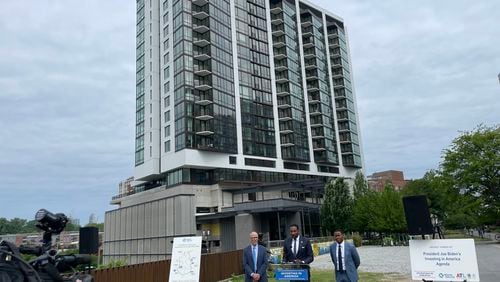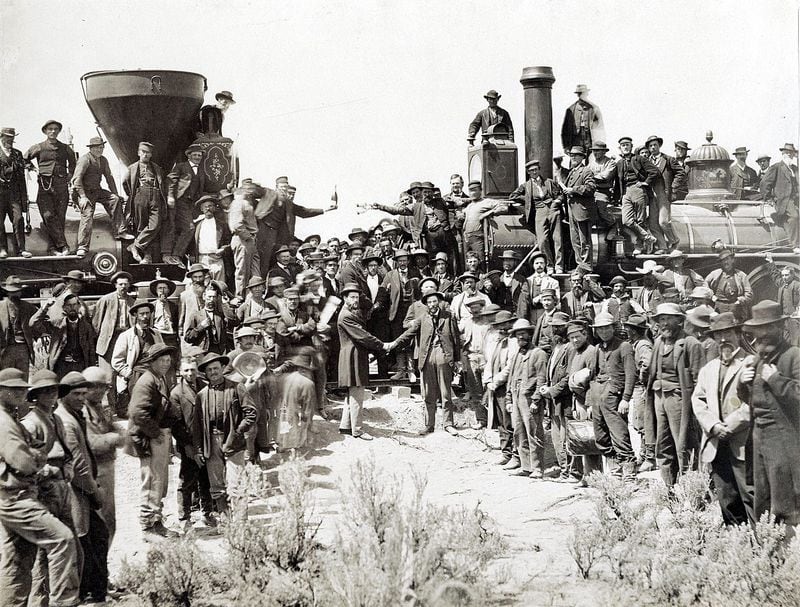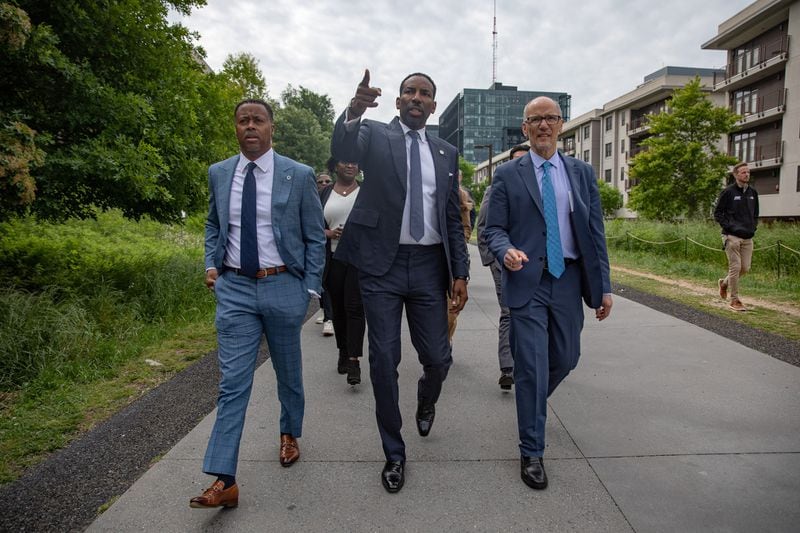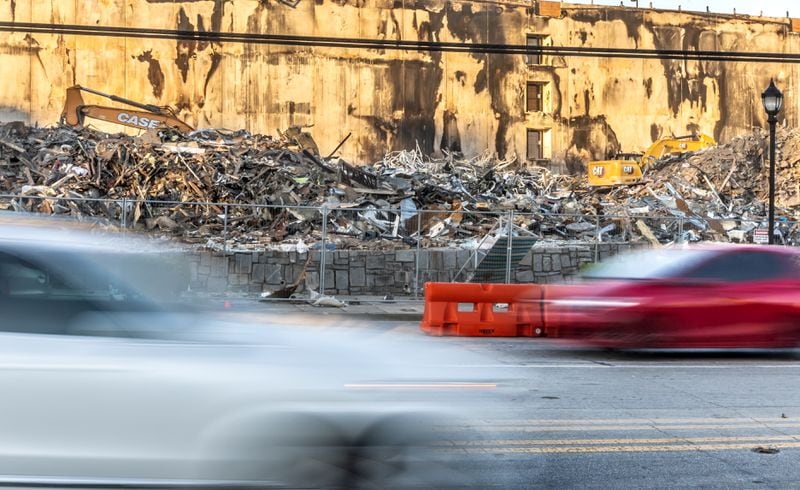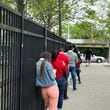Public officials in Atlanta are known for effusion when describing accomplishments.
On Wednesday, even the buttoned-down Clyde Higgs, CEO of the Atlanta Beltline, couldn’t help himself as he talked with reporters on the trail’s wildly successful eastside.
Minutes earlier, Higgs and Atlanta Mayor Andre Dickens had — with presidential aide Tom Perez in tow — announced they were accelerating completion of the Beltline’s Southern Trail. They aim to do it by early 2026 so all those fútbol fans visiting the World Cup will have something to do after visiting the Coca-Cola museum.
“This is the first time that the Eastside Trail and the Westside Trail will be connected,” Higgs said after the official announcement. Before long, he noted, a person could walk, bike or even scooter (scoot?) from Piedmont Park on the Beltline’s east to Washington Park on its west.
“This is one of those historic inflection points of the Beltline development,” the CEO said.
As far as “historic” connections go, I’ll go with the golden spike ceremony in 1869 when the Central Pacific and Union Pacific railroads joined in Utah. But let the fellow have his moment. Creating a semi-loop, or an 18-mile “U,” is a big step toward the ultimate 22-mile “O.” So far, about 11 miles have been completed.
Credit: Library of Congress
Credit: Library of Congress
Higgs noted the still-lagging northwest corridor of the trail has been finally determined and was a bit more difficult to navigate. “It was the only segment that did not have existing rail for us to pull up.” So they had to wangle a path.
None of this is cheap, of course, $800 million so far and counting. The biggest chunk of that is the money from the TAD (or tax allocation district) with mandates that additional real estate taxes created by new development are plowed back into the defined area. Higgs said the Beltline TAD, which expires after 2030, brought in almost $100 million this year, about 30% more than projected. The project has also gotten federal and philanthropic money.
Perez, the president’s aide, was in town because the Biden administration came up with $25 million to help with the trail. It was a we-love-you, you-love-us moment. Remember, it’s election year.
Also, it’s also good for Dickens to be out there pushing achievements and big plans because it helps change the conversation after recently hinting he’s no longer a fan of extending the streetcar to the Eastside Trail.
For years, he was an ardent supporter of the $230 million, 2-plus-mile project but lately has been saying he supports more study into what might be the best form of transit on the Beltline. MARTA is now doing that study. I believe it has sunk in on Dickens that the idea, while enticing and feel-good, would not be the best use of tax dollars.
His recent comments have caused consternation with Beltline rail fans. But Dickens on Wednesday repeated what he said a couple weeks ago, saying he’s trying to be a good steward of limited public funding.
The mayor noted that costs have escalated since he first came to the City Council a decade ago.
Credit: Riley Bunch/riley.bunch@ajc.com
Credit: Riley Bunch/riley.bunch@ajc.com
“I want to make sure we’re making the right decision about how to do this project, which by the time it’s complete, it’ll be eight to 10 years down the line, and then it’ll live on for centuries,” he said.
Read: I don’t want to be forever known as the mayor who green-lighted this dog.
A 2018 MARTA study estimated the cost of the Eastside rail extension at only $128 million. Now it’s $230 million. It’s probably even more.
He talked about math.
“Every day construction costs go up, period. Every month you can count on a one-percent to one-and-a-half percent increase to the cost of goods, cost of supplies and cost of labor.”
He went on: “I just think we need to make a current (his emphasis) set of decisions based on where we are trying to take the city in the future,” he said.
“There’s so much more technology, and people’s use demand has changed since the pandemic, since all this has been built. Let’s have a current look at things. I’d hate to use a 2006 marker to make a 2056 decision,” the mayor said, quickly adding, “That’s where we are. Nobody’s backing away from anything.”
......
Credit: John Spink
Credit: John Spink
I must note that while I often criticize the city, they do get things right. A month ago, I knocked Atlanta officials for seemingly sitting on their hands and allowing two key roads near each other to remain closed, messing up the commuting lives of residents.
In November, a large apartment complex on Lavista Road burned to the ground, causing the city to close that road for fear of toppling debris. In late December, a fire in a homeless encampment a half a mile away on Cheshire Bridge Road caused the closure of that street.
By late March, nothing had happened on those thoroughfares, which I noted in a column.
A couple days after it ran, I got a call from a Cheshire Bridge businessman who said engineers and construction crews were milling about under the bridge. On Wednesday, construction crews were working, tearing up a large chunk of the bridge for replacement.
A few days after the article, another resident called to say crews were finally knocking down the apartment remains on Lavista. On Wednesday, the road was — finally — opened again.
The gears of government grind slowly. But they do grind.
About the Author
